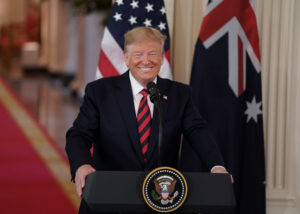Something is going on.
In an upcoming relief bill, Trump is trying to block billions of dollars for states to conduct testing and contact tracing, The Washington Post reports.
Furthermore, the administration is also trying to block billions of dollars that GOP senators want to allocate for the Centers for Disease Control and Prevention, and billions more for the Pentagon and State Department to address the pandemic at home and abroad, people involved said on Saturday.
The administration’s stance has upset some GOP senators, and some legislators are pushing back to ensure that the funds stay within the bill. Officials who wanted to remain anonymous warned that the talks were fluid, and numbers were in flux.
Senate Majority Leader Mitch McConnell (R-Ky.) plans to reveal the bill this coming week as part of negotiations with Democrats on what would likely be the final major coronavirus relief bill prior to the November elections.
Negotiations are likely to start off with increased urgency because of the skyrocketed cases—and steady uptick of deaths across the nation. This comes after the decline of cases in April, which grew sharply after the Memorial Day weekend and have since shattered records over the past two weeks.
By late May, there were less than 20,000 new cases of coronavirus each day. On Friday, the U.S. had more than 76,000 new cases reported.
The two political parties are at opposite ends on a number of issues, such as unemployment insurance. But one major issue is between the Trump administration and Senate Republicans on money meant for testing and other priorities, it is creating a major complication even before bipartisan negotiations. Some lawmakers would like to reach a deal and quickly, as enhanced unemployment benefits for U.S. citizens are set to expire in less than two weeks.
Senate Republicans are requesting to allocate $25 billion for states to conduct tests and contact tracing, but certain Trump administration officials want to zero out the money meant for this entirely. Several white house officials believe they have already approved billions of dollars in assistance, and some of the money has not been spent.
As for now, roughly 3.7 million Americans have been diagnosed with the virus, and the wait for tests can vary by state, with some waiting longer than a week for their results.
Trump and other white house officials would like to see states carry their own responsibility of testing and have objected to creating a national standard, at times seeking to minimize the federal government role.
The last major pandemic spending bill was in April, which included a $25 billion increase for testing and also required the Health and Human Services Department to release a strategic testing plan, which the agency did so by May. The plan was placed so states could take the lead on testing, not the federal government.
Senator Bill Cassidy (R-La.) and several other Senate Republicans are exploring pushing a test and tracing provision in the next round, but anticipate a push back from the White House.
Trump has longed questioned the value of testing and tracing, saying if there were less tests, there would be less confirmed cases, which doesn’t change the fact that cases are on the rise in many states, especially red states.
Congress has already spent roughly $3 trillion in new spending and tax cuts to aid in its response to the virus. Some officials want to keep the next round less than $1 trillion, while implementing new elements that can prove costly, such as payroll tax cuts, demanded by Trump. Also a plan for another round of stimulus checks, however, lawmakers are split on how to design the next round.
White House officials have also been very critical on the CDC’s performance, saying that initial testing on its part was faulty and denounced its knowledge during the beginning of the virus, while they also cut funds for testing and to the CDC.
Officials would like to spend the money on other priorities unrelated to the virus, including a new FBI building, a long time goal of Trump.




